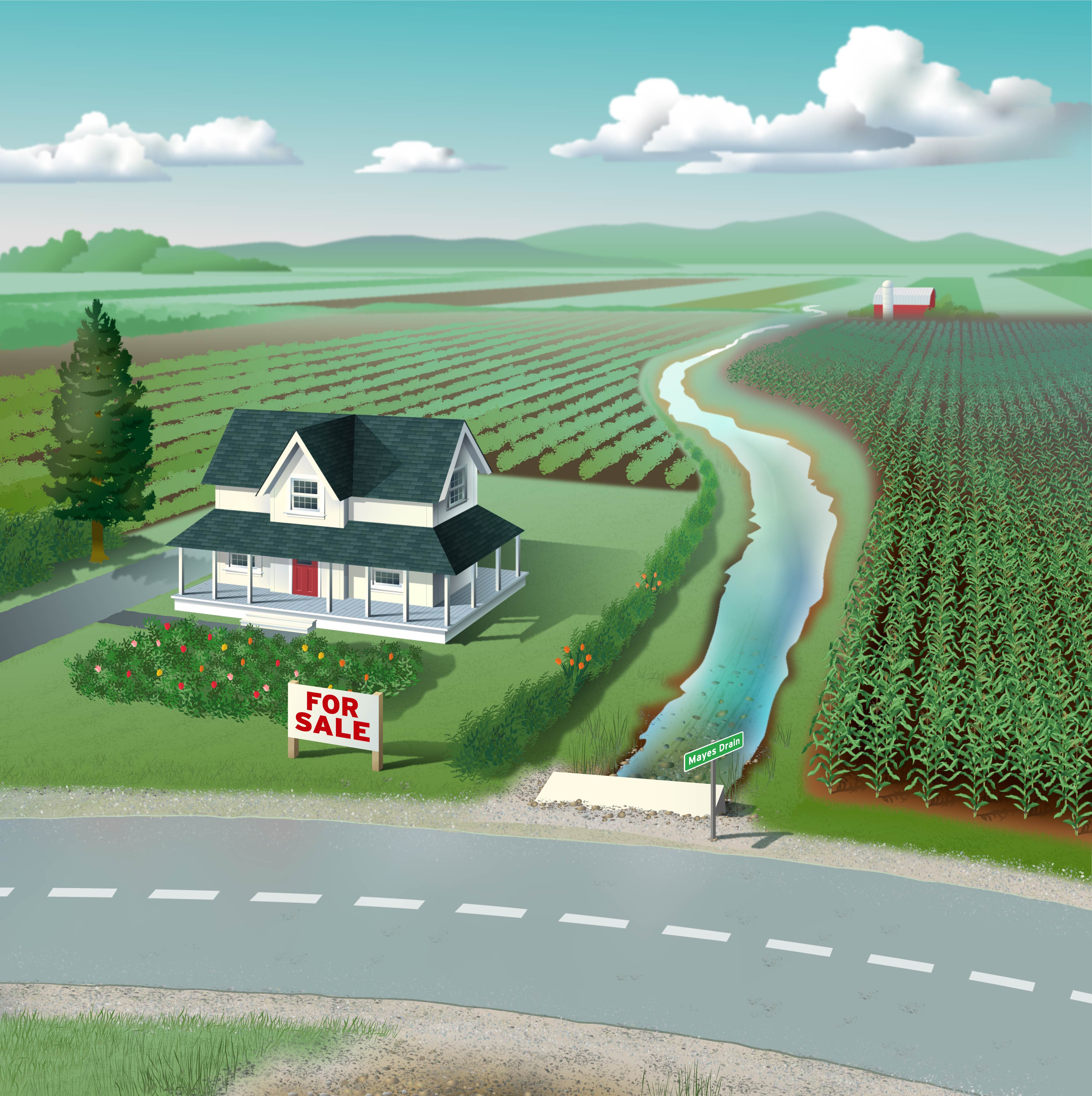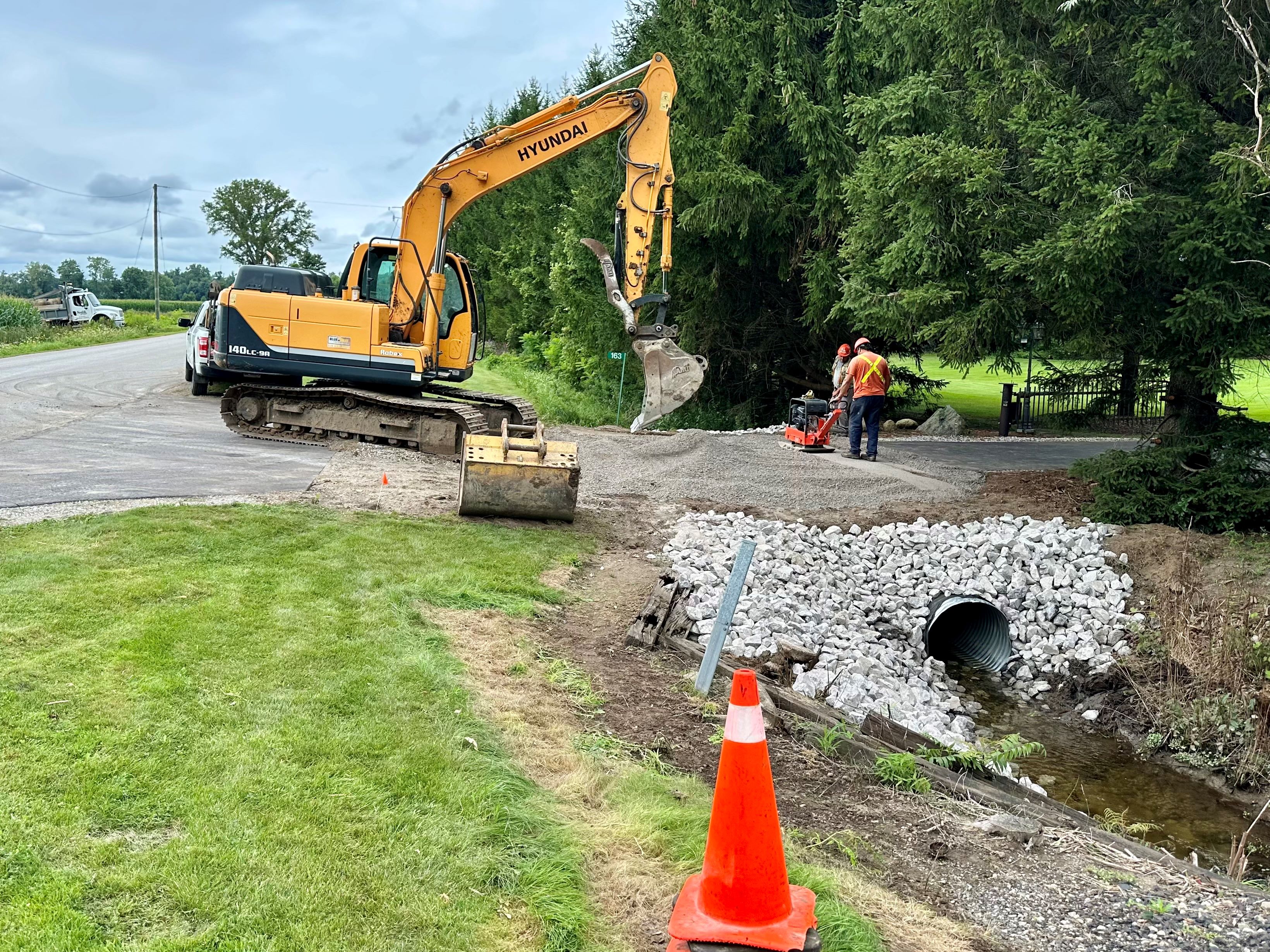Property sales and the Drainage Act
Learn how to find information about drains before making an offer to purchase a property. This technical information is for rural landowners.
ISSN 1198-712X, Published February 2025
Introduction
Drains constructed under the Drainage Act, 1990, (referred to as drains) are often overlooked at the time of the sale of a property. Drains are not registered on title but can impose financial and physical restrictions on properties. New property owners are often unaware of drains that affect their property because the drain was not disclosed to the buyer at the time of sale.
This fact sheet will help potential purchasers of property and their real estate agents to understand drains constructed under the Drainage Act, 1990 (the Act) and how to find information about them before making an offer to purchase a property (Figure 1).

Background
The Act and its predecessors have existed in Ontario for over 100 years, and it is common for properties in Ontario to be affected by drains. Historically, these drains are primarily located in rural agricultural areas of the province but can also be found in urban areas. As urban areas expand, the use of the Act and its impact in these built-up areas becomes more common. Drains serve as the legal outlet for water from both private and public properties.
Drains are established under municipal bylaws through the Act. The bylaws include a report with engineered design, plans, specifications and assessment schedules. The assessment schedules assign a portion of the cost for construction, future maintenance and repair to each property. The information contained in the engineer’s report cannot be changed without a new report authorized by council.
Drains are the responsibility of the local municipality, but, unlike municipal storm sewers or roadside ditches, they are “user-pay” systems. The costs are assessed to the property in accordance with the engineer’s report.
Assessments and property sales
Municipal policies determine how drain charges are collected from property owners. Assessments are calculated after the work is finished and may not be billed in the same year as the work is completed. The costs for drain projects are imposed on the property and may be invoiced or added as special charges through the tax bill. The charges are applied to the property at the time of billing and the current owner is responsible for paying. Drain assessments have priority lien status under the Municipal Act, 2001. In other words, they are deemed to be taxes and if unpaid can be added to the property’s tax roll.
Prospective property owners
Prior to a property sale, prospective property owners and real estate agents are encouraged to contact the local municipality to determine if a drain affects a property or if any assessments apply. Upon request, most municipalities will provide written confirmation if the property is affected by a drain or assessment. When known, the municipality can also disclose any information about future projects where Drainage Act assessments may apply to the property. The municipality may provide information about other types of drainage systems affecting the property such as mutual agreement drains, award drains or the Tile Loan Program.
If a property owner petitions for a new drain and then sells the property to another owner, the original owner’s signature continues to bind the property (and the new owners) for the purposes of the petition under the Drainage Act process.
Grants for agricultural properties
Agricultural properties may be eligible for a grant on Drainage Act assessments, including future maintenance and repair. Property owners are responsible for registering and maintaining their farm property class tax rate. The Farm Property Class Tax Rate Program is administered through Agricorp. The municipality is responsible for applying for any grant on behalf of eligible agricultural properties.
Property use and drains
When a drain is located on a property, there are certain conditions imposed on that property, including:
- right of access or entry
- damaging or obstructing a drain
Right of access
The bylaw that adopts the engineer’s report establishes a right of access similar to an easement but is not registered on title. The municipality has the responsibility to maintain and repair the drains. The drainage superintendent and contractor authorized by the municipality may enter onto property to inspect the drain and complete any necessary work (Figure 2).

Damaging or obstructing a drain
Damaging or obstructing a drain, the working area along a drain (working corridor) or the area defined for access to the drain is an offence under the Act. Property owners wishing to plant trees/shrubs along the drain should contact the local drainage superintendent. Property owners should not build structures or store equipment or debris adjacent to the drain. If a property owner damages or obstructs a drain or the working corridor, they may be ordered to restore the drain or remove the obstruction, pay any costs if the municipality is required to do the work and may also be subject to fines.
Resources
For more information on drains constructed under the Drainage Act, 1990, in your municipality, contact the local drainage superintendent or the municipal clerk.
Find additional resources regarding the Drainage Act, drainage law in Ontario or private drainage issues at the Agricultural Drainage page.
Author credits
This fact sheet was written by Tim Brook, P. Eng., drainage program coordinator, Ministry of Agriculture, Food and Rural Affairs (OMAFA), and Bill Mayes, drainage superintendent, Norfolk County. It was reviewed by Andy Kester, drainage analyst/inspector, OMAFA.